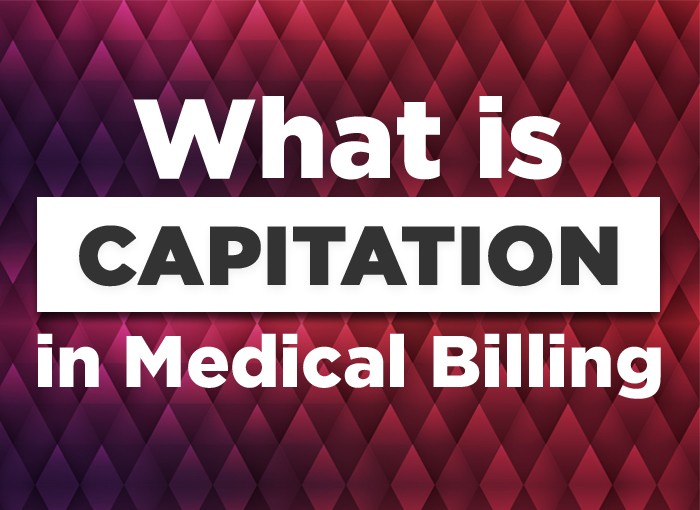What is Capitation in Medical Billing
The Centers for Medicare and Medicaid Services (CMS) introduced multiple payment models that target medical service expenses while delivering optimal medical care to Medicare beneficiaries. A capitated model serves as one payment system to support affordable medical treatments.
CMS explains that under this model three parties create a three-way contract between the Centers for Medicare & Medicaid Services (CMS) and a state and a health plan to deliver integrated coordinated medical services. CMS along with the state will deliver prospective capitation payments to each health plan under the capitated model.
A capitation payment must be validated through an agreement signed between healthcare providers and insurance payers. The capitated agreement establishes all components of a capitation payment system which establishes its authentic definition. Understanding the term capitated agreement remains essential because of its critical nature.
A Brief Overview of Capitated Agreement and Capitated Contract
Under a capitated agreement, the healthcare provider gets a predetermined payment to cover all healthcare costs for patients with insurance from a specific payer. Under the capitated agreement, the health care provider must provide care to each patient for the established flat fee even if the patient requires multiple hospital visits for similar or dissimilar treatments. The health care provider receives monthly capitation payments regardless of patient hospital visits during that period.
A Health Maintenance Organization (HMO) functions as an entity that both provides health coverage and distributes capitation payments through monthly or annual agreements. A collection of health care insurance providers establish HMOs to restrict their capitation payment system to doctors and medical providers who maintain active contracts with the HMO.
It is important to note that a capitation agreement must include a list of specific services that may be provided to the patient under the health care insurance plan. Listing all the services helps the patient to understand that he/she is eligible to receive services that are mentioned in the insurance plan and the capitated agreement.
Definition of Capitation Payment
The term capitation payment is defined as the payment agreed upon in a capitated agreement by a medical provider health insurance company. The payment is a fixed amount in US dollars that is received by the health care provider every month for each patient enrolled in a health care insurance plan. The monthly payment is calculated in advance and remains unchanged for the said year regardless of how often the patient visits the health care provider for services.
Understanding Capitation Payments
Capitation payments tend to vary across states because the rates are determined based on local costs and average utilization of services.
The primary care services under the capitation model may include:
- Diagnostic, preventive, and treatment services
- Services administrated in the office like injections, immunizations, and other medications
- Outpatient laboratory tests (both in-office or at a designated lab)
- Monthly Capitation Payment for End-stage Renal Disease: 4 or More Visits per Month (by CMS)
Advantages of Capitated Payment in Medical Billing
- One time billing
- Assurance of reimbursement
- Decreased risk of denied claims
- Cost-effective treatment
The capitated model makes the reimbursement process by reducing administrative work like multiple bills and submission claims.
Types of Capitation Arrangements
There are three primary types of capitation arrangements in healthcare:
- Primary Care Capitation: A primary care capitation arrangement covers the complete range of services that physicians deliver including preventive care basic treatments and routine check-ups. The standard form of capitation exists as the most prevalent arrangement.
- Specialty Care Capitation: The system pays specialists a fixed amount per member for delivering specialized medical care that falls within their specific area of expertise.
- Global Capitation: The model includes all medical services from primary care through specialty care to hospital services. The most inclusive payment model gives providers maximum financial exposure yet grants them complete control of patient healthcare management.
Risk Adjustment in Capitation Payments
Healthcare providers’ capitation rates are typically adjusted based on various risk factors:
- Age and gender demographics of the patient population
- Geographic location and local healthcare costs
- Historical utilization patterns
- Presence of chronic conditions
- Social determinants of health
- Population health metrics
These adjustments help ensure fair compensation for providers serving populations with different healthcare needs and risk profiles.
Challenges and Considerations in Capitation Models
Healthcare providers operating under capitation agreements face several challenges:
- Financial Risk Management
- Need for accurate actuarial analysis
- Importance of maintaining adequate cash reserves
- Risk of losses if patient care costs exceed capitation payments
- Quality of Care Concerns
- Balancing cost containment with quality healthcare delivery
- Implementing effective preventive care programs
- Maintaining patient satisfaction while managing resources
- Administrative Requirements
- Sophisticated tracking systems for patient encounters
- Regular monitoring of utilization patterns
- Compliance with quality metrics and reporting requirements
Best Practices for Success Under Capitation
Healthcare organizations can optimize their performance under capitation through:
- Population Health Management
- Implementing robust preventive care programs
- Utilizing data analytics for risk stratification
- Developing targeted interventions for high-risk patients
- Operational Efficiency
- Streamlining administrative processes
- Optimizing scheduling and resource allocation
- Implementing effective referral management systems
- Quality Monitoring
- Establishing clear quality metrics
- Regular performance evaluation
- Continuous improvement protocols
Medical billing through capitation brings novel payment approaches that prioritize disease prevention healthcare cost reduction and operational efficiency. The system provides advantages to providers through simplified billing operations and predictable revenue yet it requires effective financial risk management along with strong administrative systems. Healthcare systems depend heavily on capitation as they advance their mission to deliver sustainable quality healthcare to patients.



